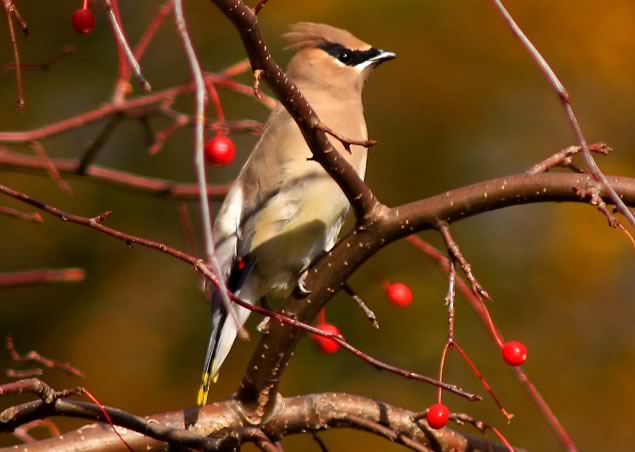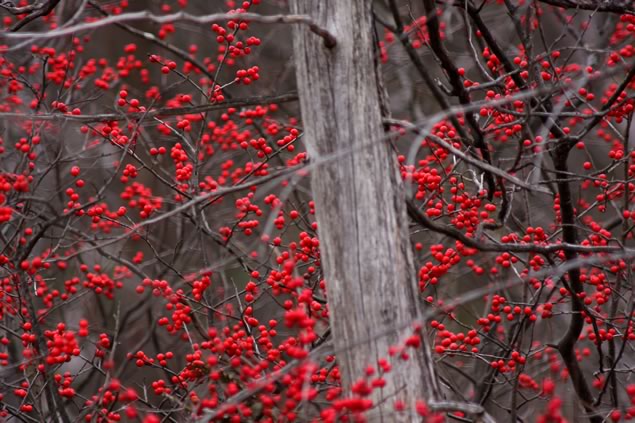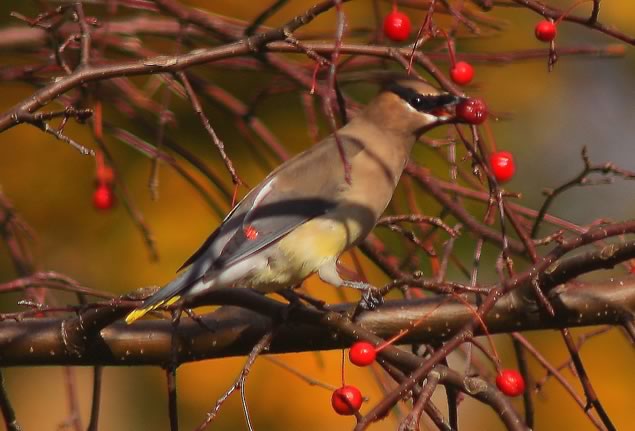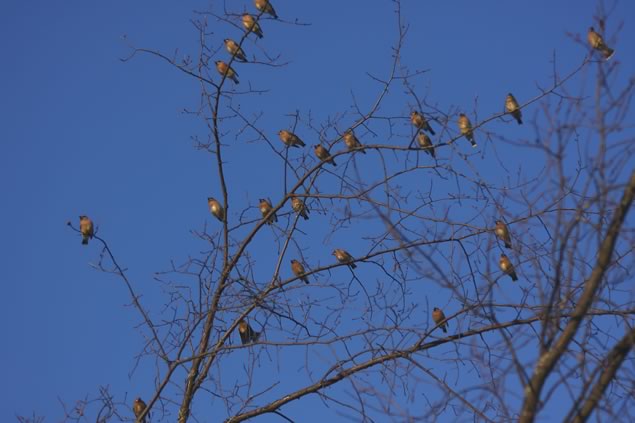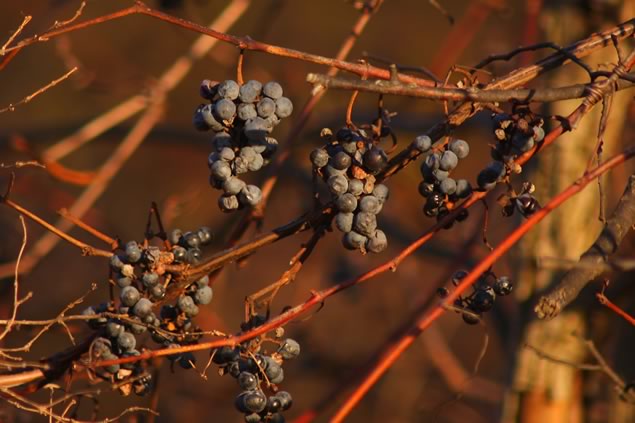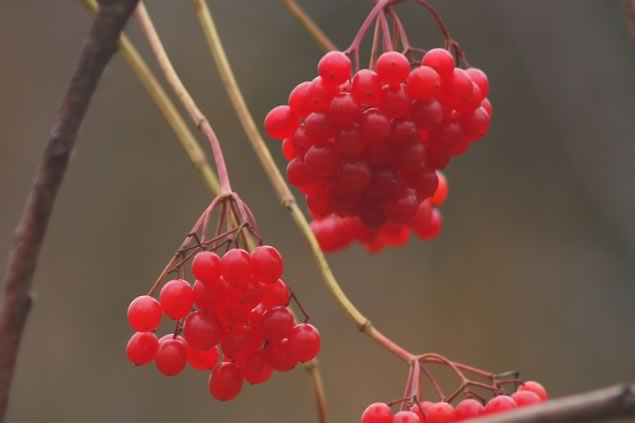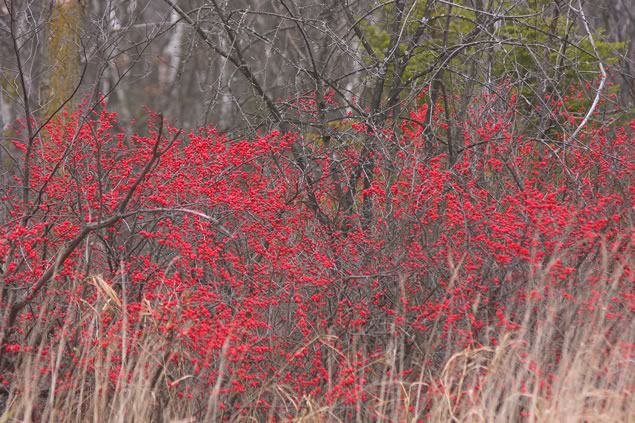Cedar Waxwings
A lovely shrub that waxwings find irresistible in late fall and early winter is a native holly called “winterberry”.
Cedar waxwings are frugivores – fruit eaters that is. While other species of native birds enjoy fruit, waxwings are the most dedicated of our avian fruit epicureans – so much so that fruit dictates their behaviour and even influences their appearance.
A band of bright yellow adorns the tip of their tails and their wingtips are highlighted by small patches of a red waxy substance – hence the name “waxwing”.
These colourful adornments are derived from the red, yellow and orange “carotenoids” found in fruit. The brilliance of these colour patches is likely used by waxwings to evaluate the fitness of potential mates, just as we size up potential partners by physical characteristics.
Waxwings breed a little later than most songbirds to take advantage of summer ripening fruit. They time their nest building and egg laying to coincide with the summer bounty of cherries, serviceberries and elderberries. Sometimes families of waxwings will nest in loose colonies in areas of particular fruit abundance.
Outside of the breeding season waxwings continue their sociable ways. They become nomadic wanderers, touching down wherever they find fruiting shrubs. In winter this is often in river valleys where they can also slake their thirst with running water.
They appear as well in suburbia in winter to dine on crabapples and mountain ash berries. Grapes, highbush cranberries and the fruit of buckthorn, an exotic invasive species, also provide winter sustenance.
A lovely shrub that waxwings find irresistible in late fall and early winter is a native holly called “winterberry”. This wetland shrub fairly shouts out its presence in the landscape when laden with scarlet berries. Watching the dapper cedar waxwings – lovely in their own right – feast on the brilliant winterberry fruit, is a truly memorable experience.
Related Stories
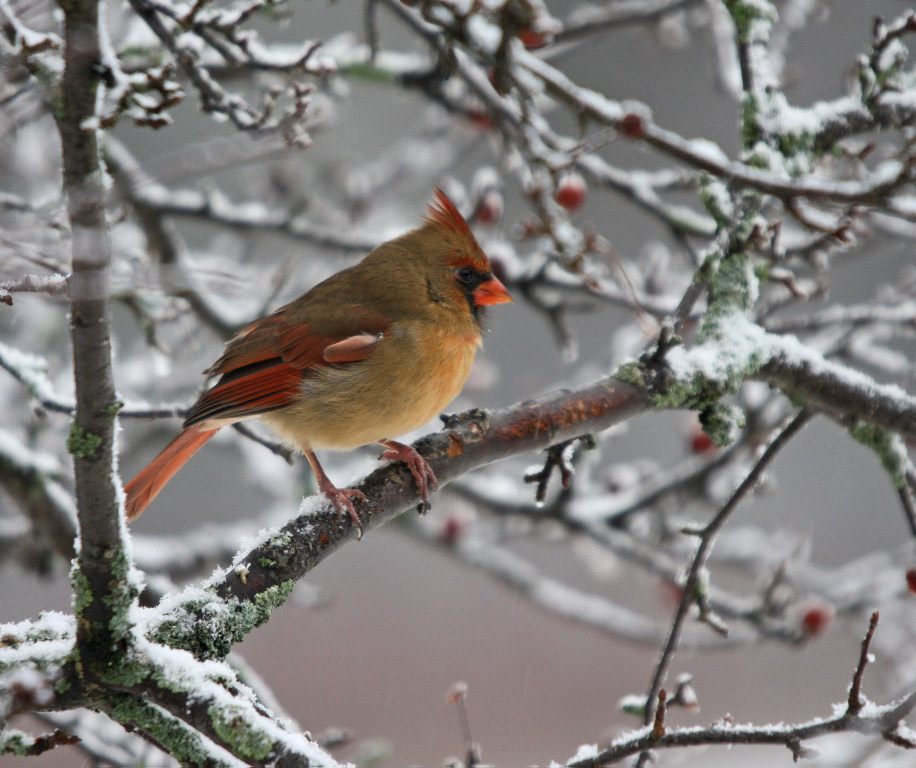
Winter Bird Counting
Jan 17, 2011 | | EnvironmentThe Christmas Bird Count is an annual tradition that entices naturalists to down steaming cups of pre-dawn coffee and then head out birding at first light.

